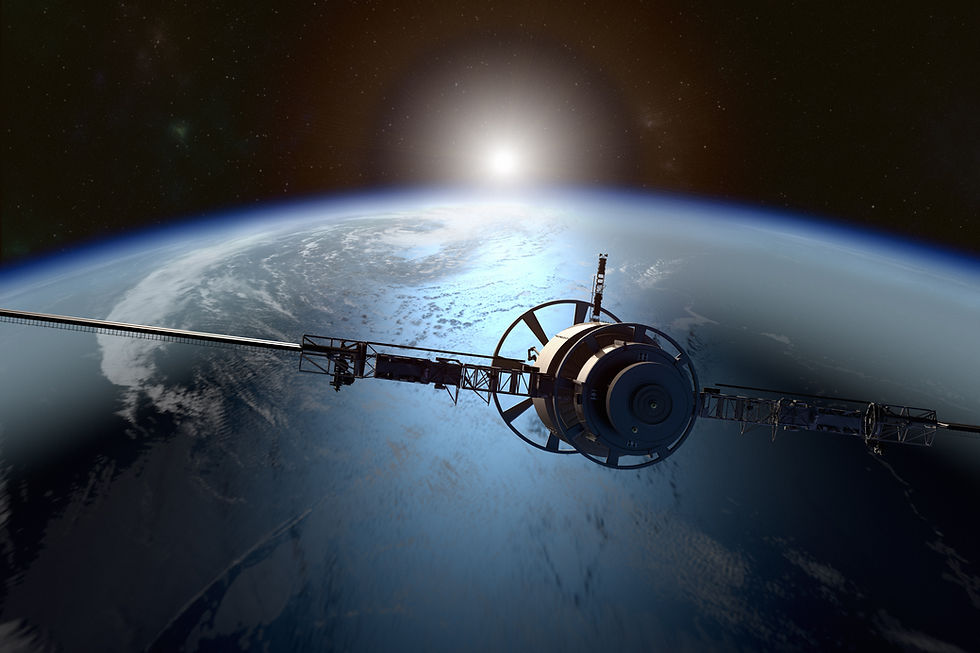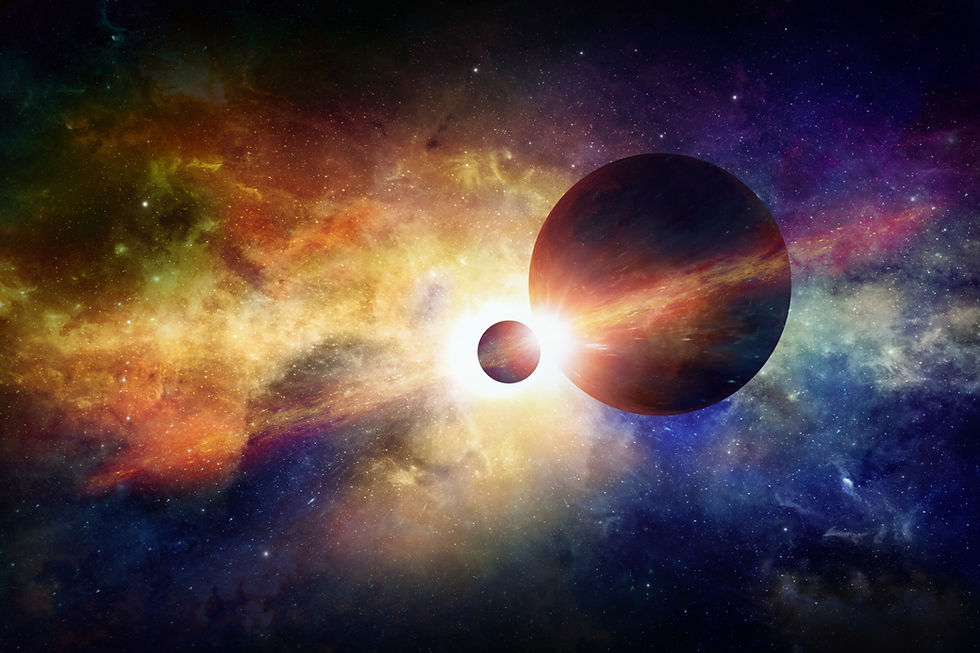This Universe & Others: How Black Holes Could Lead to Parallel Worlds
- Riyam Ojaimi

- Aug 16, 2024
- 4 min read
Updated: Oct 9, 2024
The concept of parallel universes, once relegated to the realms of science fiction and speculative philosophy, has gained traction in modern physics through the study of black holes, white holes, and the Einstein-Rosen bridge, often referred to as a wormhole. These phenomena challenge our understanding of space, time, and the universe itself, hinting at the possibility that our universe may not be the only one in existence.
Black Holes
The Gateways to the Unknown
Black holes are extraordinary regions in the fabric of spacetime where gravitational forces become so overwhelmingly powerful that nothing, not even light—the fastest entity in the universe—can escape. These cosmic phenomena form when a massive star exhausts its nuclear fuel and undergoes a catastrophic gravitational collapse. As the star's core contracts, its matter is compressed into an extremely dense state, culminating in the formation of a singularity. This singularity is a point where density becomes infinite, and the known laws of physics break down.
Surrounding the singularity is the event horizon, a critical boundary marking the point of no return. Once any object crosses this threshold, it is inexorably pulled inward, with no possibility of escape. The event horizon effectively cloaks the singularity from the outside universe, rendering the black hole invisible to direct observation, as no light or information can be emitted from within.
The extreme conditions that exist near a black hole - where gravitational forces warp spacetime to an extraordinary degree - have led physicists to consider the possibility that these entities might be more than just cosmic vacuums consuming everything in their vicinity. The intense warping of spacetime around a black hole, predicted by Einstein’s theory of general relativity, suggests that these objects could potentially connect different regions of the universe or even serve as portals to other universes. This speculative idea stems from the notion that the singularity and the event horizon could, in some theoretical models, act as one end of a tunnel through spacetime, potentially leading to an entirely different reality or a distant part of our own universe.
White Holes
Theoretical Mirrors of Black Holes
So, black holes are regions of spacetime where gravity is so intense that nothing, not even light, can escape their pull. They act as cosmic traps, where matter and energy are drawn in and confined beyond the event horizon, the boundary beyond which escape becomes impossible. In contrast, white holes are theoretical constructs proposed as the mirror image of black holes. Instead of trapping matter and energy, a white hole would expel them, creating a region of spacetime where nothing can enter from the outside. Essentially, while black holes are all-consuming, white holes are all-expelling.
The concept of white holes arises naturally from the mathematical framework of general relativity. If you take the equations that describe a black hole and reverse the direction of time, you end up with a solution that describes a white hole. This time-reversed counterpart of a black hole would have the same gravitational pull, but instead of pulling matter inward, it would push everything away.
However, unlike black holes, which are supported by strong observational evidence, white holes remain purely theoretical, as no white hole has ever been observed in the universe.
In theoretical physics, there's a fascinating possibility that a black hole and a white hole could be connected, forming a continuous pathway between two different regions of spacetime. This hypothetical connection is often described using the concept of a wormhole, more formally known as an Einstein-Rosen bridge. An Einstein-Rosen bridge is a solution to the equations of general relativity that describes a tunnel-like structure linking a black hole and a white hole.
The Einstein-Rosen Bridge
Connecting Universes
The concept of white holes is rooted in the mathematics of general relativity. Specifically, they emerge from the Schwarzschild solution, a key solution to Einstein's field equations. The Schwarzschild solution describes the spacetime geometry surrounding a spherical, non-rotating mass, such as a static black hole. The metric is given by:
This metric describes the spacetime curvature outside a spherical mass, leading to the formation of a black hole when r reaches the Schwarzschild radius. So if you take a mass and compress it to within this critical radius, it forms a black hole. The Schwarzschild radius is essentially the boundary of the black hole - the point of no return.
If you consider the time-reversed scenario of the Schwarzschild solution, the equations suggest the existence of a white hole—a region where instead of matter and energy being drawn in, they are expelled. The singularity still exists, but the flow of matter and time is reversed, leading to an outward push rather than an inward pull.
In this context, a white hole can be viewed as the time-reversed counterpart of a black hole. The mathematical structure remains consistent, but the roles of incoming and outgoing matter and energy are switched. However, unlike black holes, which have been extensively observed and studied through their effects on surrounding matter and radiation, white holes remain purely theoretical. No physical evidence of a white hole has been found, and their existence in the universe is speculative.
Mathematically, the Einstein-Rosen bridge extends the Schwarzschild solution to include a second sheet of spacetime, effectively creating a "bridge" between two distinct regions. However, the bridge is not stable in the Schwarzschild geometry and would collapse almost instantaneously, preventing anything from passing through. The metric for such a wormhole connection involves modifying the Schwarzschild metric to include this second region, but it quickly leads to a singularity, where normal spacetime breaks down.
If stable wormholes could exist - perhaps through the introduction of exotic matter with negative energy density - they might provide a pathway through which one could traverse immense distances or even explore parallel universes. Until then, I recommend you keep watching the movie Interstellar while imagining that somewhere out there in this vast universe could be as infinitely many vast universes that are connected to ours through one single black hole!
Thank you for enjoying this blog post!
Yours truly, Riyam Ojaimi







.png)
Comments